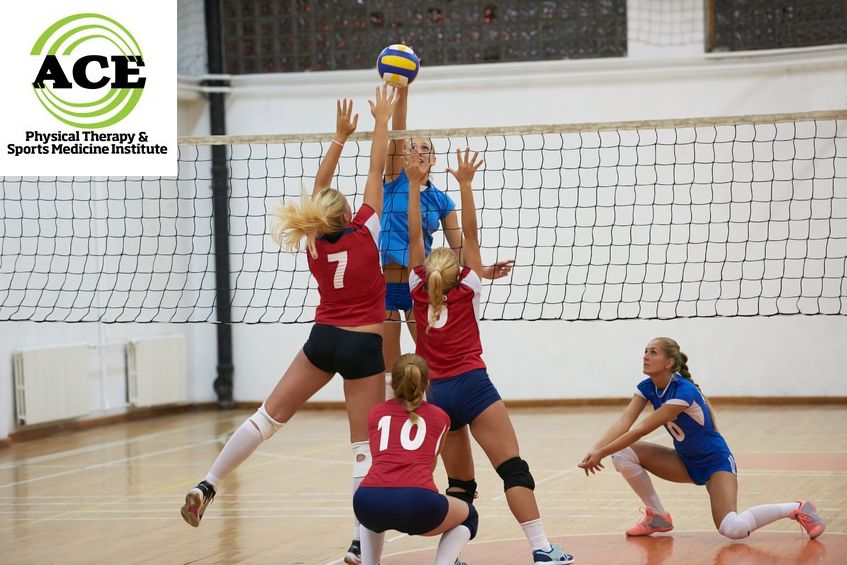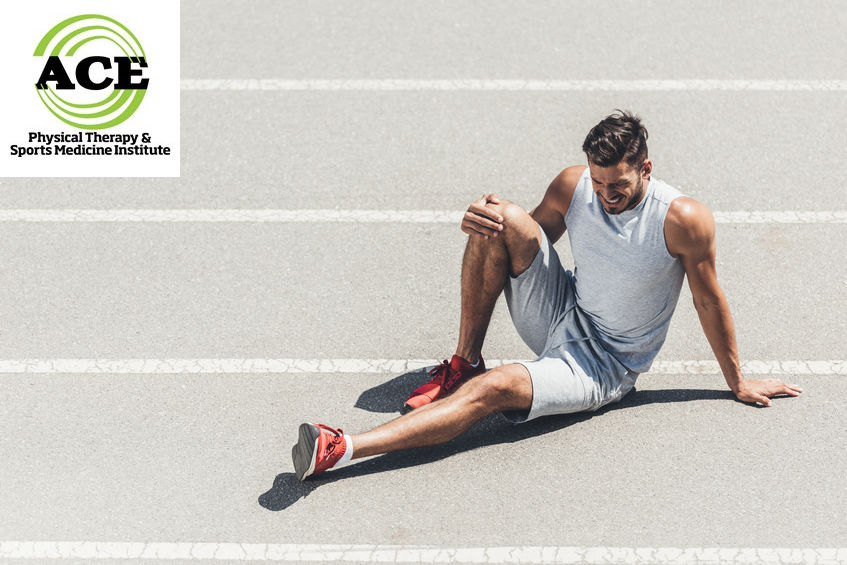JUMPER’S KNEE

Tid Bits of Info
- Jumper’s knee is a condition that results in tendinopathy in the knee due to a repetitive overload of stress from jumping.
- 25% of all athletes that suffer from jumper’s knee have quadriceps tendon involvement that is the primary cause.
- Jumper’s knee is one of the most common injuries volleyball players suffer.
- 14% of all athletes suffer from jumper’s knee.
- See a Physical Therapist if you suffer from anterior knee pain.
Jumping puts a great deal of force on the joints and tendons. Athletes who play basketball, volleyball, and/or jumping track sports sometimes complain of pain and swelling in the knee area. Jumper’s knee is most commonly associated with an inflamed patella tendon but sometimes the pain originates in the quadriceps tendon. A thorough evaluation can help determine source of pain and the best plan for recovery.
Jumper’s knee is most often associated with a sharp pain in the front of the knee when athletes “take off” and “land” following a jump. It is critical for the healthcare specialist to determine if the pain originates from the quadriceps femoris or patella tendon.
These two tendons differ in many ways and the approach to rehabilitation of an injured tendon should be based on its characteristics. The quadriceps tendon originates at the musculotendinous junction of the four quadriceps femoris muscles and crosses the knee joint by engulfing the patella and extending to the tibia via the patella tendon. The patella tendon is truly a ligament because it attaches to the patella (bone) and inserts into the tibia (bone).
The primary differences between these tendons are that the quadriceps tendon is more pliable and able to stretch along with the “pull” of the four quadriceps muscles which enables it to absorb a great deal of “load” when activated. This pliability reduces the chances of the tendon rupturing when the “load” is great (i.e. upon landing from a high jump or landing with extra weight on the body).
The patella tendon is not able to elongate at the same rate as the quadriceps tendon due to its “leather-like” consistency. Ligaments provide static support and the patella tendon provides stability to the knee joint by transferring the forces produced by the quadriceps muscles to the anterior aspect of the knee joint. There is very little “stretch or give” within the patella tendon. Fiber orientation plays a role in this stability because the linear arrangement of the patella tendon fibers produces a straight line, unified pull on the anterior aspect of the knee. The quadriceps tendon has four distinct muscles inserting into it and all have a different fiber orientation. The different orientation allows the quadriceps to generate a tremendously forceful contraction that enables it to move the tibia. The force on the tendon is different and determined by the most active muscle in the group of four.

Rehabilitation of an injured tendon needs to be slightly different in the quadriceps tendon when compared to the patella tendon. Tendinopathy conditions respond to “loading” the tendon via exercises (eccentric muscle contractions work well). The quadriceps tendon needs to be assessed to determine if one of the four muscles is weaker and causing an abnormality in the function of the quadriceps tendon. This imbalance might be the primary cause of the damage and if addressed by modifying the exercises with simple changes is flexion angles of the hip and knee and changing the foot positions during the strengthening exercises the damaged tendon has a better chance to heal.
Physical Therapists are great healthcare professionals to consult with if you are suffering from anterior knee pain. These licensed professionals are well educated in evaluating and treating this condition. You can visit a Physical Therapist without seeing a doctor, but your insurance policy might require you to have a referral from your general practitioner.
Anterior knee pain in athletes that are involved in a sport that requires a great deal jumping can develop that pain due to the force that is placed through the tendons of the joint. The diagnosis of “jumper’s knee” is common amongst healthcare professionals and too often the quadriceps tendon is over-looked and undiagnosed as the primary cause of the symptoms. Special attention needs to be given to the cause of the symptoms when assessing the symptoms associated with anterior knee pain that results from jumping sports.
